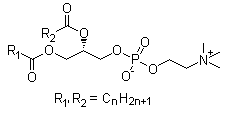Your Location:Home > Products > Food Ingredients > Lecithin



CasNo: 8002-43-5
MF: Unspecified
Appearance: yellow to light brown solid.
|
Sources and Categories |
Lecithin is a complex mixture of phosphatides, primarily phosphatidylcholine (PC), phosphatidylethanolamine, phosphatidylserine, and phosphatidylinositol, with varying amounts of triglycerides, fatty acids, and carbohydrates. It is isolated from animal or vegetable sources, with main sources being maize, egg yolk, and soybean. |
|
Chemical Composition and Structure |
Lecithin is composed of phosphatides, predominantly phosphatidylcholine, along with other phospholipids, triglycerides, fatty acids, and carbohydrates. Its molecular structure is amphiphilic, allowing it to exhibit excellent emulsifying properties. |
|
Mechanism of Action |
Lecithin acts as an emulsifier, modifying crystal habit (size), and interacts with wax molecules to alter the morphology and dimensions of fat crystals. It also self-assembles through non-covalent interactions, such as hydrogen bonding, in food products. |
|
Medical Applications |
Lecithin has been reported to improve cardiovascular health by preventing cholesterol deposition, enhance immune and liver functions, and improve skin texture. Choline derived from lecithin hydrolysis can promote cell activation and neural network flexibility. |
|
Industrial Applications |
Used as an emulsifier in food products like margarine, chocolate, cakes, and breads, and in personal care products. Also utilized in livestock and poultry feed industry to enhance production performance, nutrient digestibility, and health status. Lecithin nanoparticles coated with chitosan serve as nanocarriers for bioactive compounds, improving their stability, release, and effectiveness. |
|
Historical Development |
Discovered in the late 19th century, lecithin gained recognition for its emulsifying properties and health benefits over time. It has been widely used in food, medicine, cosmetics, and other industries. Generally recognized as safe (GRAS) by the FDA and approved for use as a food additive. |
|
Production Methods |
Commercial lecithin is isolated through hydration of solvent-extracted oils from sources like soy, safflower, or corn. It can be further processed by hydrogenation or enzymatic modification. Industrial production involves bleaching, if desired, by hydrogen peroxide and benzoyl peroxide, and drying by heating. Enzyme-modified lecithin, such as lysolecithin, is prepared by treating lecithin with phospholipase A2 or pancreatin. |
|
Definition |
ChEBI: A glycerophosphocholine compound having O-acyl substituents at both the 1- and 2-positions of the glycerol. It is a major constituent of cell membranes. |
|
Pharmaceutical Applications |
Lecithins are used in a wide variety of pharmaceutical applications. They are also used in cosmetics and food products. Lecithins are mainly used in pharmaceutical products as dispersing, emulsifying, and stabilizing agents, and are included in intramuscular and intravenous injections, parenteral nutrition formulations, and topical products such as creams and ointments. Lecithins are also used in suppository bases, to reduce the brittleness of suppositories, and have been investigated for their absorption-enhancing properties in an intranasal insulin formulation. Lecithins are also commonly used as a component of enteral and parenteral nutrition formulations. There is evidence that phosphatidylcholine (a major component of lecithin) is important as a nutritional supplement to fetal and infant development. Furthermore, choline is a required component of FDA-approved infant formulas. Other studies have indicated that lecithin can protect against alcohol cirrhosis of the liver, lower serum cholesterol levels, and improve mental and physical performance. Liposomes in which lecithin is included as a component of the bilayer have been used to encapsulate drug substances; their potential as novel delivery systems has been investigated. This application generally requires purified lecithins combined in specific proportions. Therapeutically, lecithin and derivatives have been used as a pulmonary surfactant in the treatment of neonatal respiratory distress syndrome. |
|
Biochem/physiol Actions |
It also acts as a source of lipid messengers/ bioactive lipids including: lysophosphatidylcholine, diacylglycerol, phosphatidic acid, lysophosphatidylcholine, arachidonic acid and platelet activating factor. Phosphatidylcholine is produced in the liver by the CDP-choline (cytidine diphosphocholine) pathway. |
|
Safety |
Lecithin is a component of cell membranes and is therefore consumed as a normal part of the diet. Although excessive consumption may be harmful, it is highly biocompatible and oral doses of up to 80 g daily have been used therapeutically in the treatment of tardive dyskinesia. When used in topical formulations, lecithin is generally regarded as a nonirritant and nonsensitizing material. The Cosmetic Ingredients Review Expert Panel (CIR) has reviewed lecithin and issued a tentative report revising the safe concentration of the material from 1.95% to 15.0% in rinse-off and leave-in products. They note, however, that there are insufficient data to rule on products that are likely to be inhaled. |
|
storage |
Lecithins decompose at extreme pH. They are also hygroscopic and subject to microbial degradation. When heated, lecithins oxidize, darken, and decompose. Temperatures of 160–180°C will cause degradation within 24 hours. Fluid or waxy lecithin grades should be stored at room temperature or above; temperatures below 10°C may cause separation. All lecithin grades should be stored in well-closed containers protected from light and oxidation. Purified solid lecithins should be stored in tightly closed containers at subfreezing temperatures. |
|
Purification Methods |
Lecithin from hen egg white is purified by solvent extraction and chromatography on alumina. It is suspended in H2O and kept frozen until required [Lee & Hunt J Am Chem Soc 106 7411 1984, Singleton et al. J Am Oil Chem Soc 42 53 1965]. For purification of commercial egg lecithin, see Pangborn [J Biol Chem 188 471 1951]. |
|
Incompatibilities |
Incompatible with esterases owing to hydrolysis. |
|
Regulatory Status |
GRAS listed. Accepted for use as a food additive in Europe. Included in the FDA Inactive Ingredients Database (inhalations; IM and IV injections; otic preparations; oral capsules, suspensions and tablets; rectal, topical, and vaginal preparations). Included in nonparenteral and parenteral medicines licensed in the UK. Included in the Canadian List of Acceptable Non-medicinal Ingredients. |
InChI:InChI=1/C12H24NO7P/c1-10(14)18-8-12(20-11(2)15)9-19-21(16,17)7-6-13(3,4)5/h12H,6-9H2,1-5H3/t12-/m1/s1